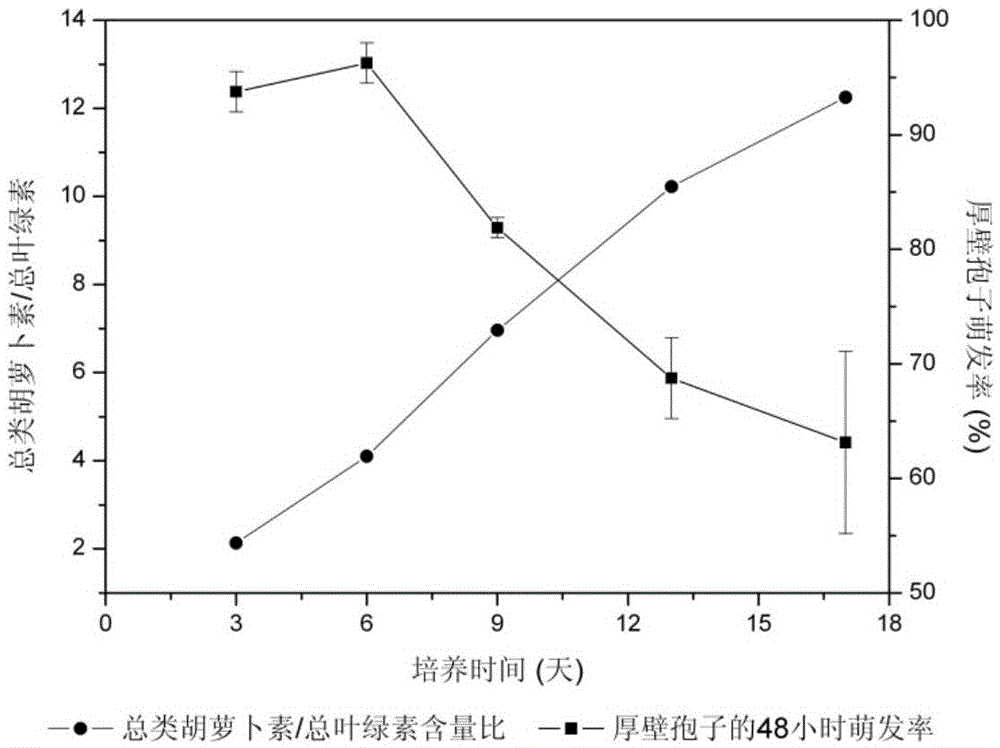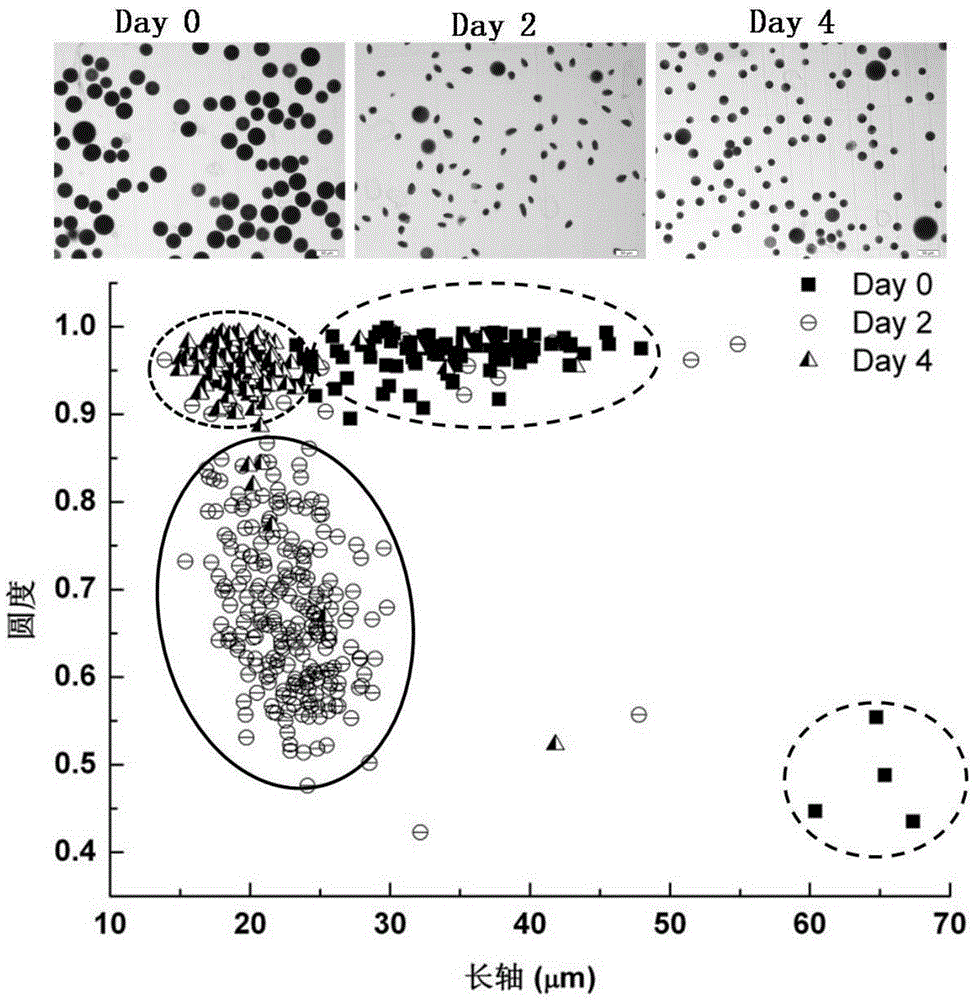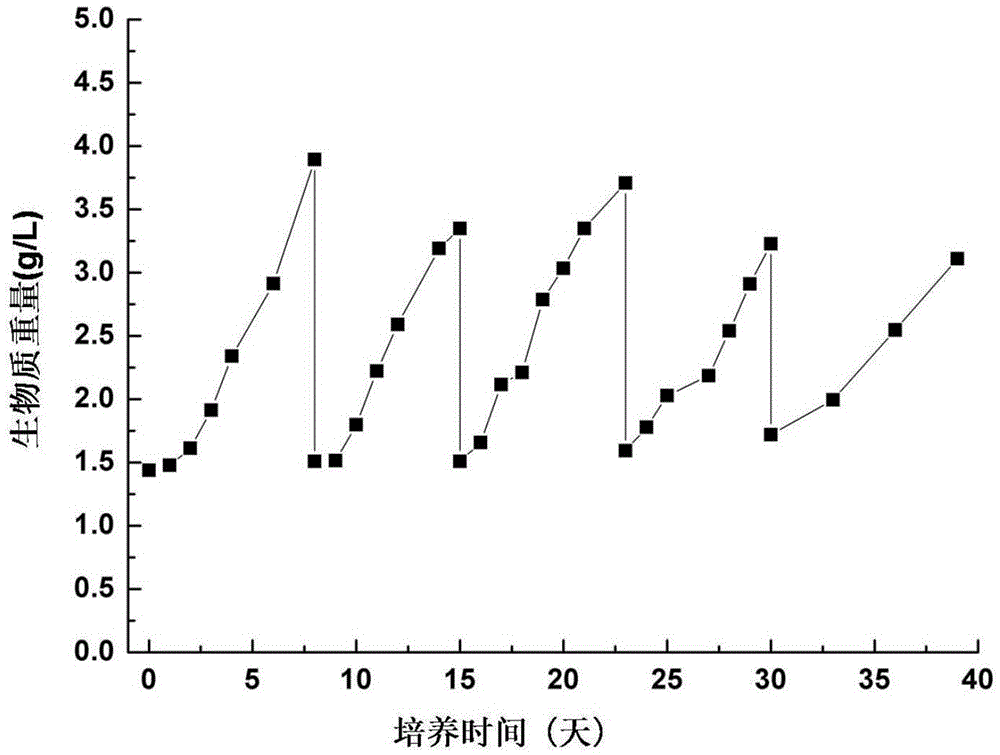Regulating method of cell cycle synchronization of haematococcus pluvialis and application thereof
A Haematococcus pluvialis and cell cycle technology, which is applied in the field of regulation of Haematococcus pluvialis cell cycle synchronization, can solve the problems of inability to achieve synchronous culture and cannot meet research needs, and achieves a simple, easy, and synchronized method. high degree of effect
- Summary
- Abstract
- Description
- Claims
- Application Information
AI Technical Summary
Problems solved by technology
Method used
Image
Examples
Embodiment 1
[0054] Haematococcus pluvialis NIES-144 algae strain from NIES algal species bank in Japan, in nitrogen-free BG11 medium and 200 μmol / m 2 / s under continuous light for 6-30 days; after that, inoculate the chlamydospores obtained at different time points into 3N-BBM containing 4.0mmol / L sodium nitrate, the initial cell density was 0.8g / L, and the 2 / s continuous light with 1.5% CO 2 After 48 hours, observe and measure the germination rate of Firmicutes spores. With the prolongation of culture time, the maturity of Firmicutes gradually increased, and the carotenoid / chlorophyll content ratio gradually increased, from 2.2 at the beginning to 12.5 on the 17th day. After 48 hours of germination, it first increased and then decreased, and the highest The germination rate reached 97% in 48 hours. When the culture medium was supplemented with ferrous sulfate with a final concentration of 450 μmol / L, the content ratio of carotenoid / chlorophyll in the obtained chrystrophic spores was 1...
Embodiment 2
[0056] Haematococcus pluvialis SAG34-1b strain from the German SAG collection, in nitrogen-free BBM medium and 150 μmol / m 2 / s under continuous light for 8 days, the ratio of total carotenoids / total chlorophyll in the cells was 2.5. Centrifuge to discard the supernatant and harvest the spores, then resuspend them in BBM medium containing 2.0mmol / L ammonium carbonate and 2.0mmol / L urea, the initial cell density is 1.0g / L, and place them in the Erlenmeyer flask Cultivate, observe and measure the germination rate of Firmicutes after 48 hours, and the synchronous germination rates are 90% and 80% respectively. By 72 hours, the cells in the culture system rapidly cystized and formed chlamydospores.
Embodiment 3
[0058] Haematococcus pluvialis K-0084 strain from the Danish SCCAP strain bank, under nitrogen starvation and 200 μmol / m 2 The ratio of total carotenoids / total chlorophyll in the cells was 4.1 when cultured under the double stress of continuous light for 6 days. Centrifuge to discard the supernatant and harvest the chlamydospores, then resuspend in the BG11 medium containing 0-8.0mmol / L sodium nitrate at a cell density of 0.25g / L, 2 1.0% CO2 is fed under continuous light 2 After 48 hours, observe and measure the germination rate of Firmicutes spores. For the chrystrophic spores resuspended in the medium without sodium nitrate, the 48-hour germination rate was 0; for the chrystrophic spores resuspended in the medium containing 0.5-2.0mmol / L sodium nitrate, the 48-hour germination rate exceeded 90% %; resuspended in the culture medium containing 4.0, 8.0mmol / L sodium nitrate, the germination rate decreased instead in 48 hours, but due to the residual nitrogen in the medium, th...
PUM
| Property | Measurement | Unit |
|---|---|---|
| strength | aaaaa | aaaaa |
Abstract
Description
Claims
Application Information
 Login to View More
Login to View More - R&D
- Intellectual Property
- Life Sciences
- Materials
- Tech Scout
- Unparalleled Data Quality
- Higher Quality Content
- 60% Fewer Hallucinations
Browse by: Latest US Patents, China's latest patents, Technical Efficacy Thesaurus, Application Domain, Technology Topic, Popular Technical Reports.
© 2025 PatSnap. All rights reserved.Legal|Privacy policy|Modern Slavery Act Transparency Statement|Sitemap|About US| Contact US: help@patsnap.com



